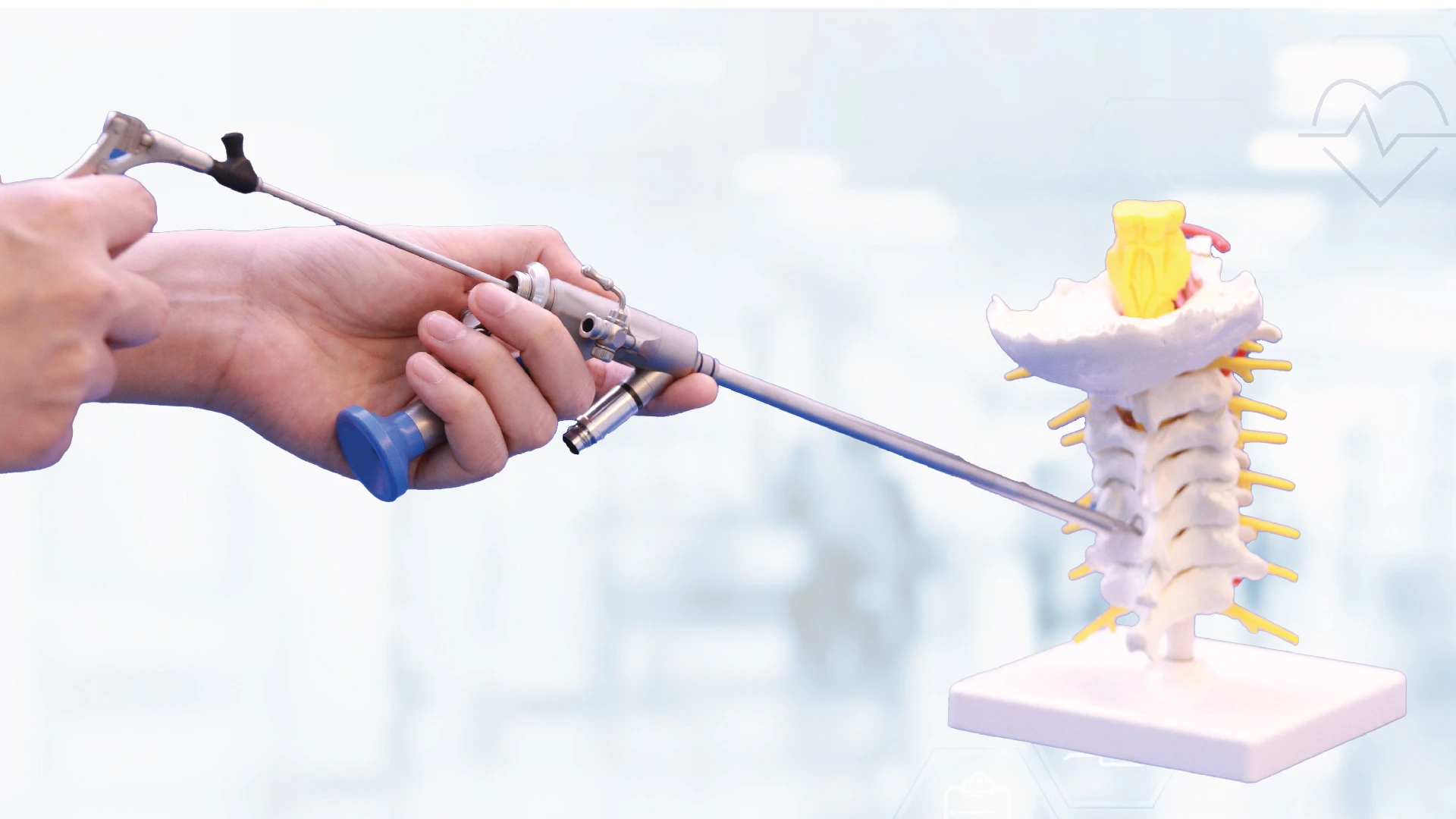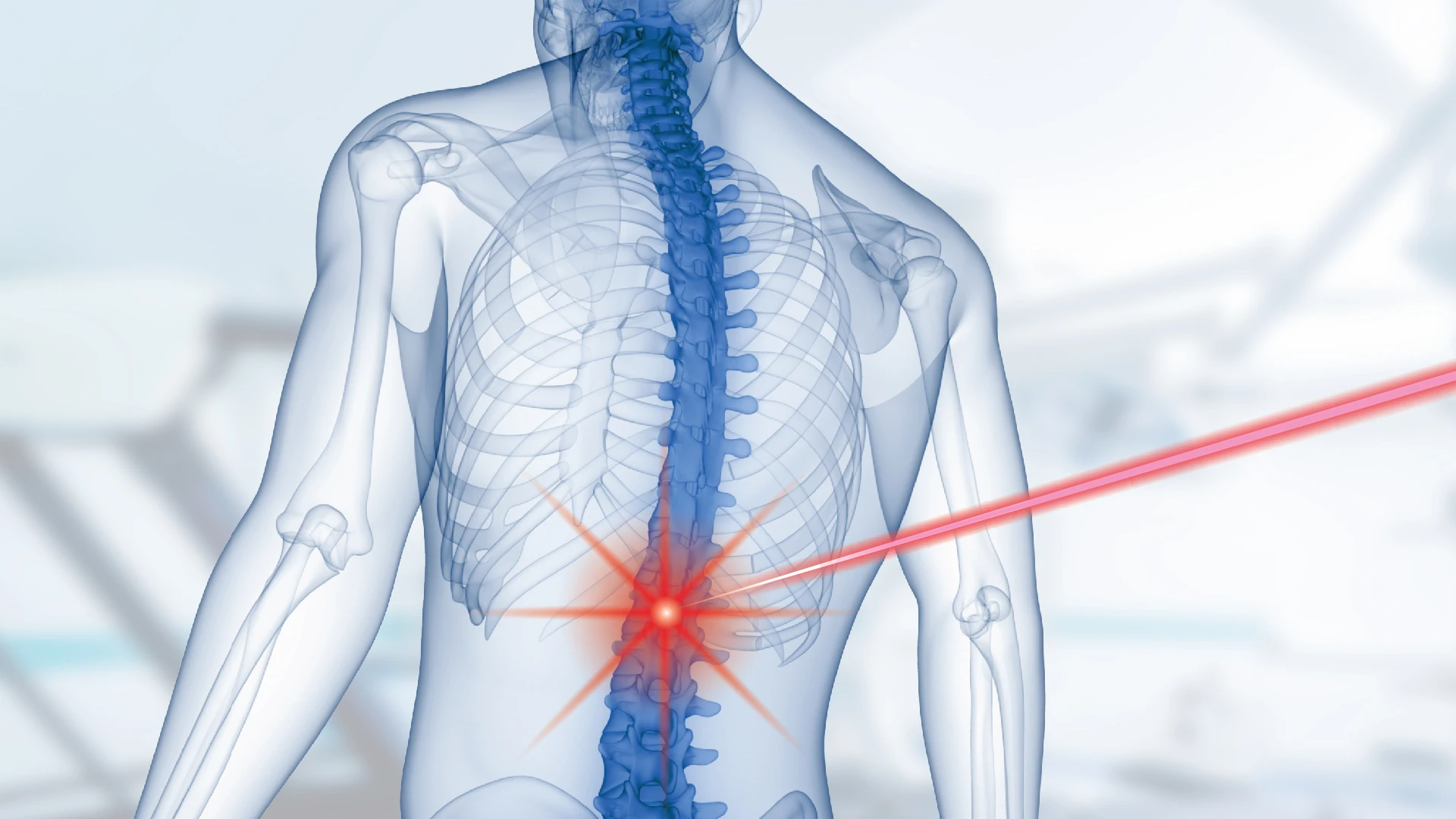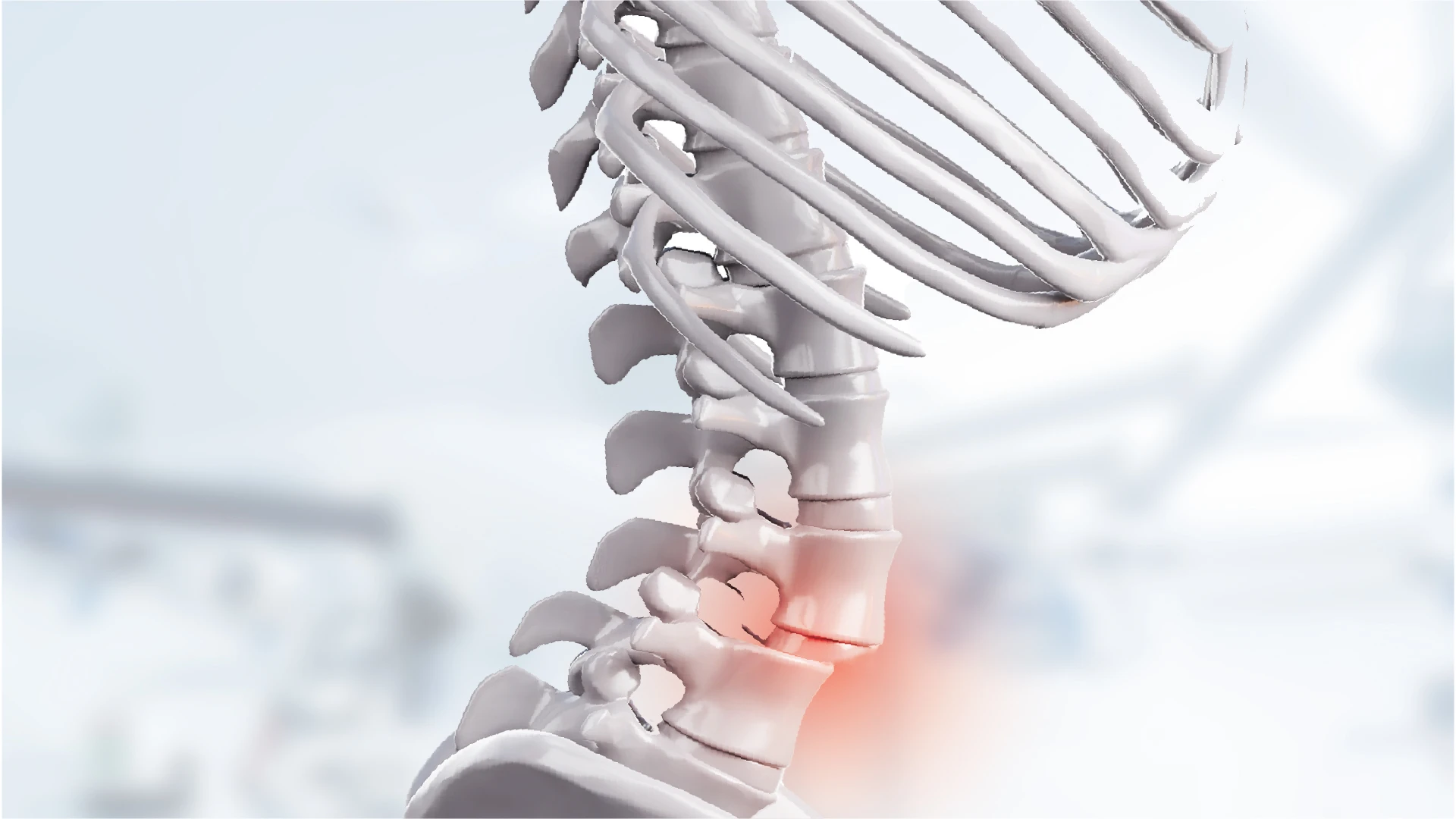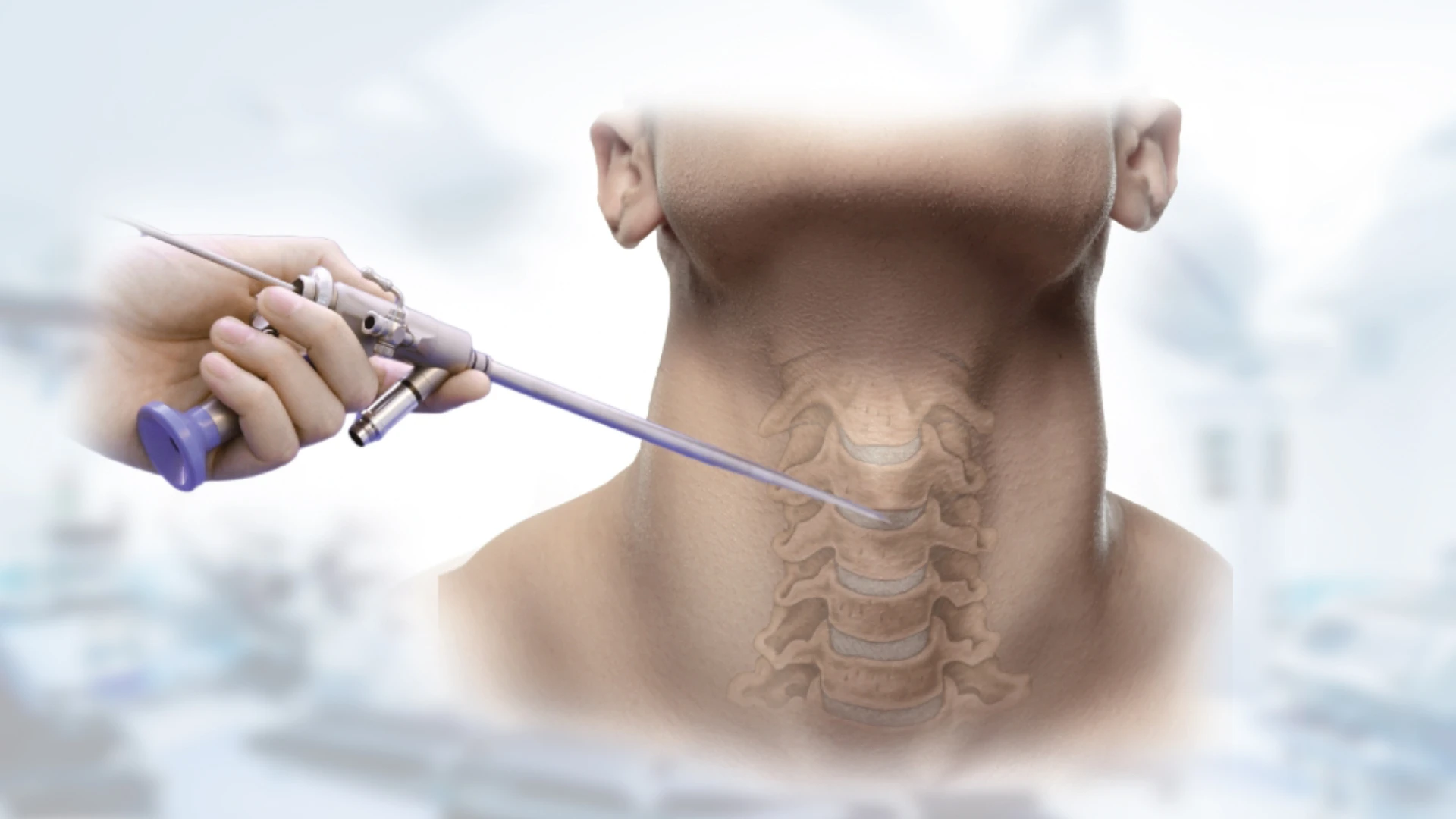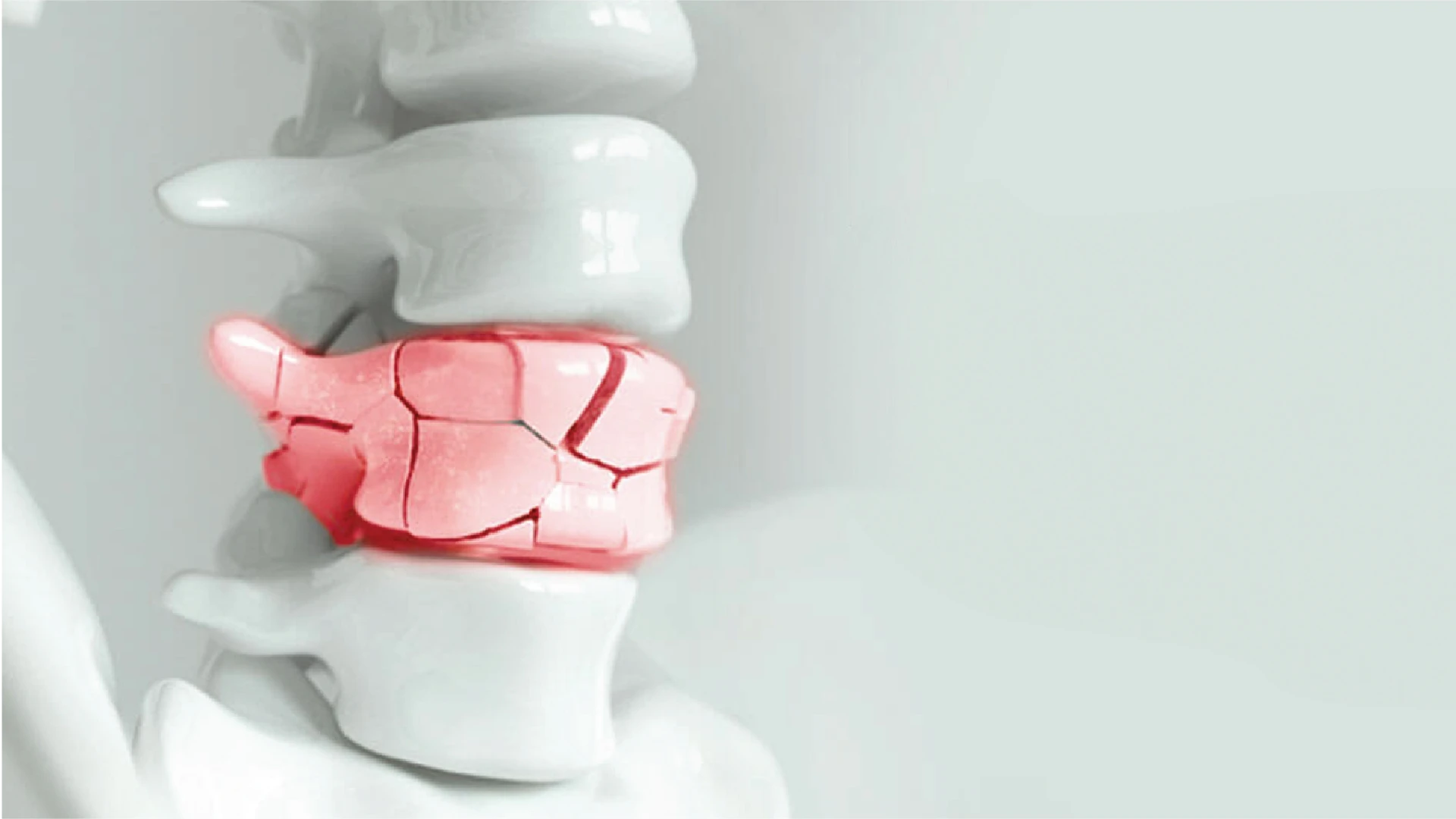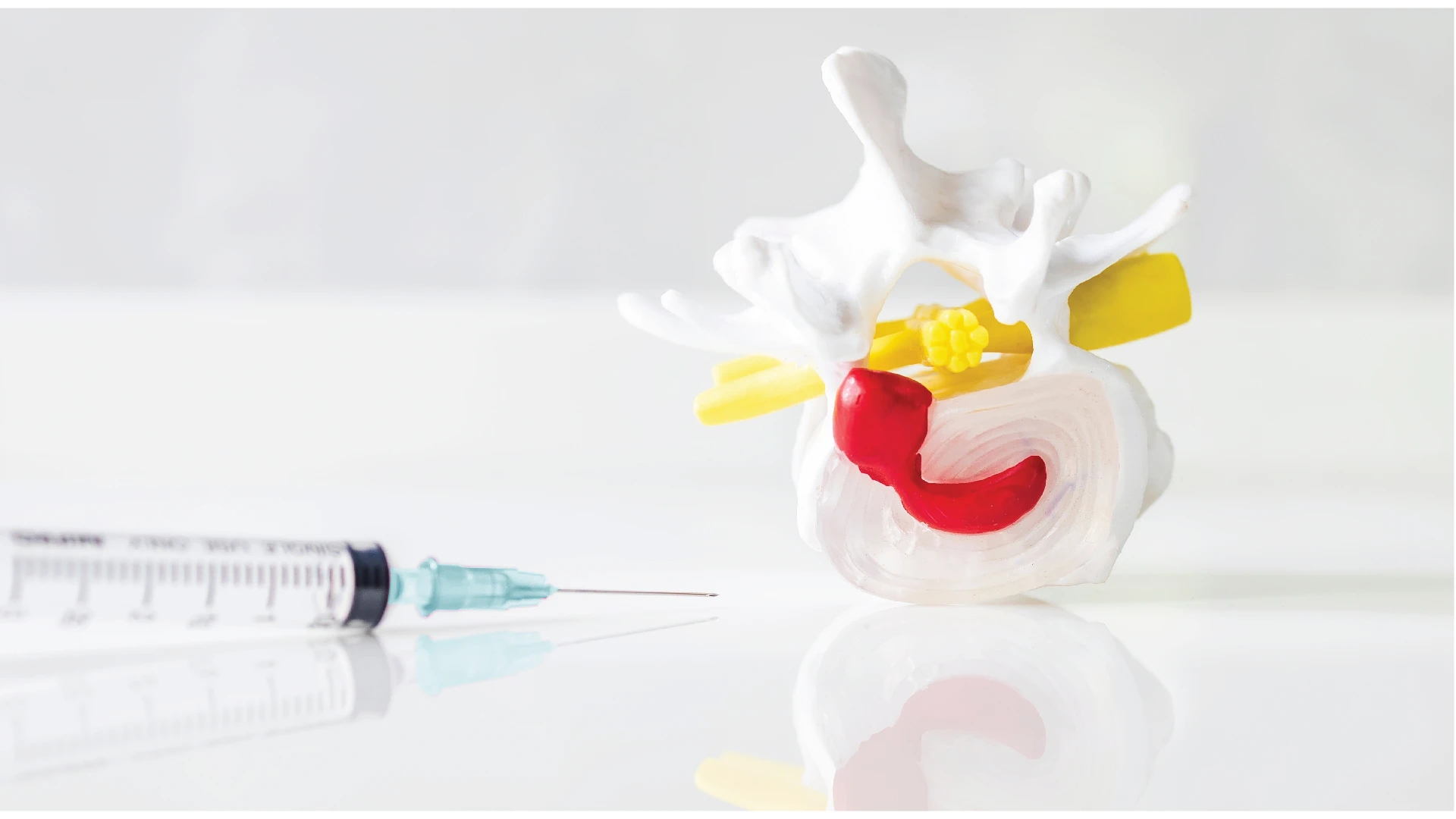How Does the Spine Slip Out of Place?


Spondylolisthesis, also known as vertebral slippage or spinal displacement, occurs when one of the vertebrae slips out of alignment and shifts forward relative to the adjacent vertebra.
Spondylolisthesis, also known as vertebral slippage or spinal displacement, occurs when one of the vertebrae slips out of alignment and shifts forward relative to the adjacent vertebra.
While spondylolisthesis can occur at any level of the spine, it most commonly affects the lower back, particularly between the L4 and L5 vertebrae. This condition often causes severe lower back pain, especially during movement or changes in posture.
Spinal slippage is frequently accompanied by narrowing of the spinal canal, leading to nerve compression. However, this condition can be effectively treated with minimally invasive guided screw fixation using the TLIF technique.
Signs You Might Have Spondylolisthesis
Primary symptoms of spinal slippage include:
-
Lower back pain that worsens with prolonged standing, walking, sitting, or bending down.
-
Pain radiating from the lower back into the buttocks or thighs.
-
Numbness, tingling, or electric-shock-like sensations radiating down one or both legs.
-
Prolonged nerve compression may lead to muscle weakness or even bladder and bowel dysfunction.
Even if only one of these symptoms is present, it’s recommended to consult a spine specialist promptly.
Spinal Slippage Is Not the Same as a Herniated Disc
Many people mistakenly believe that spinal slippage is the same as a herniated disc. However, these are distinct conditions with different causes and symptoms.
When Should You See a Doctor for Lower Back Pain?
-
Lower back pain lasting more than 3–4 weeks
-
Persistent pain in the thighs, hips, or buttocks for over 3–4 weeks
-
Pain that worsens when walking or standing for long periods
-
Increased back pain while changing sleeping positions or posture
-
Nerve compression may result in lower back pain, numbness, or electric-like sensations shooting down one or both legs
Diagnosis
During physical examination, the doctor may perform a straight leg raise test. If the patient has a herniated disc, they may be unable to raise the leg fully forward.
Imaging such as X-ray and MRI will then be ordered to determine the level of vertebral slippage and nerve compression.
4 Grades of Spondylolisthesis Severity
Grade 1: The vertebra has slipped forward less than 25%.
Grade 2: The vertebral slippage is between 26% and 50%.
Grade 3: The slippage ranges from 51% to 75%.
Grade 4: The vertebra has slipped more than 76% forward.
Treatment Options for Spondylolisthesis
Spondylolisthesis can be treated using either non-surgical or surgical methods, depending on the severity and symptoms.
Non-Surgical Treatment
For milder cases, non-surgical treatments may be effective and include:
-
Avoid activities that worsen the condition, such as heavy lifting
-
Maintain a healthy body weight
-
Use NSAIDs (nonsteroidal anti-inflammatory drugs) as prescribed
-
Receive spinal epidural steroid injections to reduce inflammation
-
Undergo physical therapy to improve flexibility and core muscle strength
-
Wear a lumbar support brace (LS support)
Surgical Treatment
Surgical treatment involves spinal fusion using the TLIF (Transforaminal Lumbar Interbody Fusion) technique, a minimally invasive procedure that stabilizes the vertebrae.
The procedure prevents further vertebral movement by placing an interbody cage (artificial disc spacer) and widening the narrowed nerve canal to relieve compression.
Using small incisions and advanced image-guided navigation, screws are inserted percutaneously without cutting muscles—resulting in minimal tissue damage and faster recovery.
This technique allows for faster recovery and improved post-surgical outcomes.
How to Prevent Spondylolisthesis
-
Stretch properly before exercising or playing sports
-
Strengthen core muscles to support the spine
-
Limit activities that place excessive stress on the spine, such as golf, tennis, gymnastics, or weightlifting
-
Avoid overexertion during physical activities
-
Maintain a healthy weight to reduce pressure on the spine
Reference:
https://www.nhs.uk/conditions/slipped-disc/
Read More
Related Services

No. 2102/9 Ladprao Road, Wang Thonglang Subdistrict, Wang Thonglang District, Bangkok 10310
Call : 02-034-0808Our Services
Quick Menu
Copyright © 2025 S Spine and Joint Hospital. All right reserved


